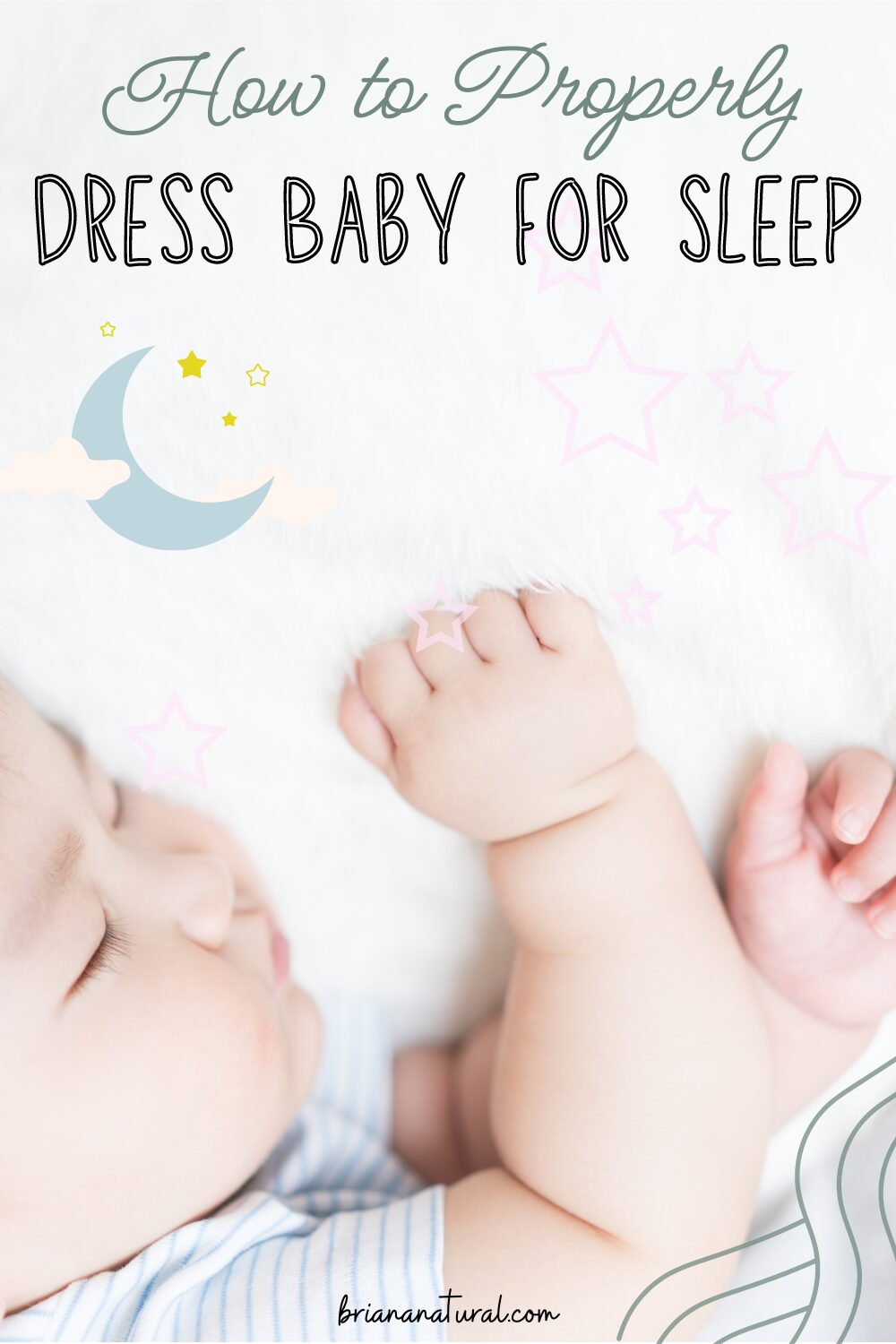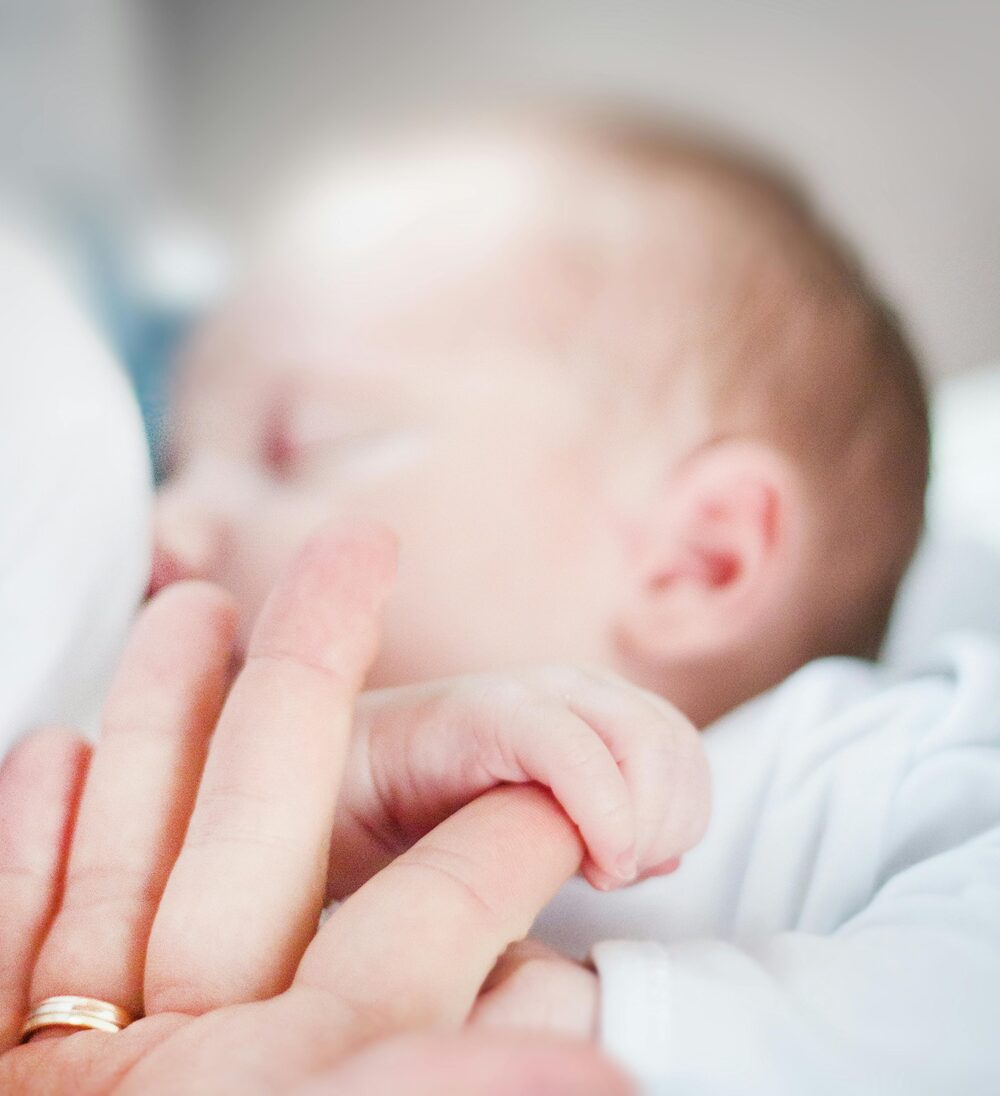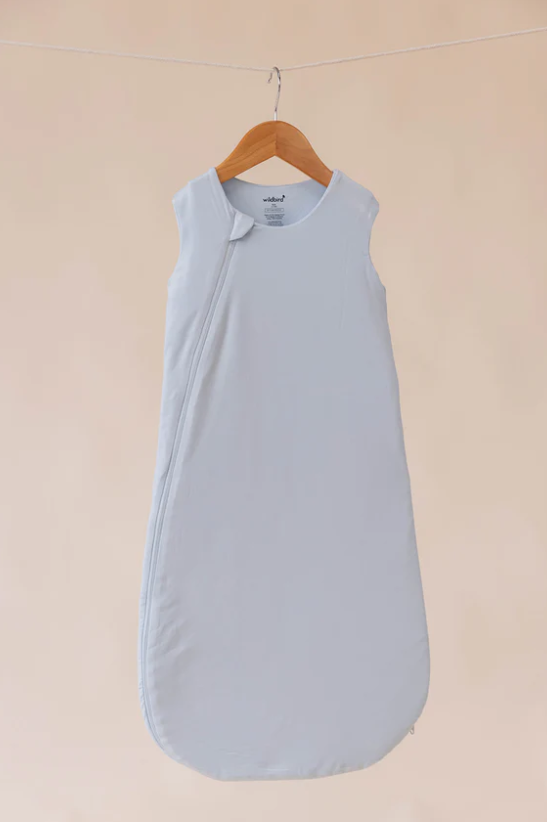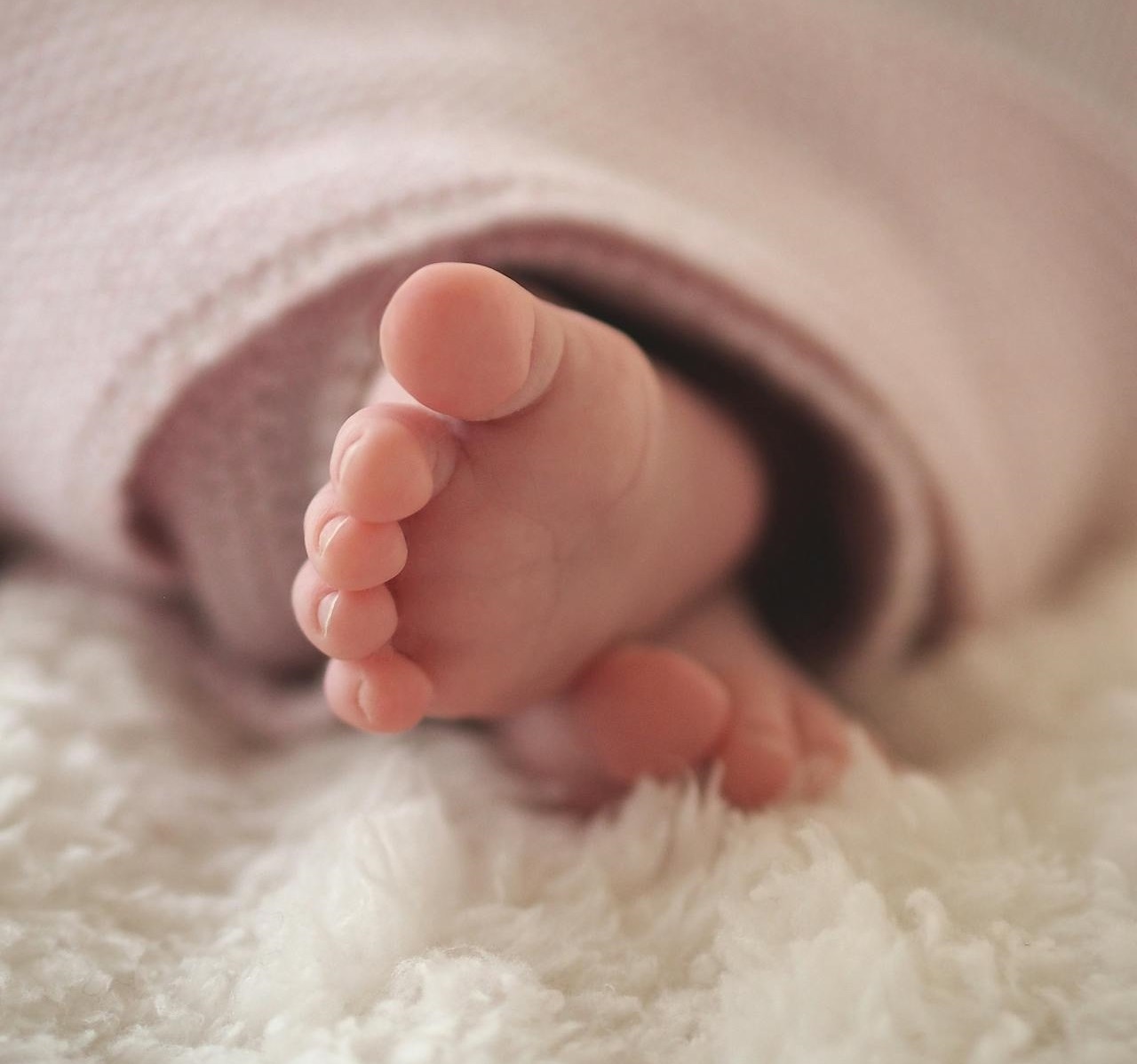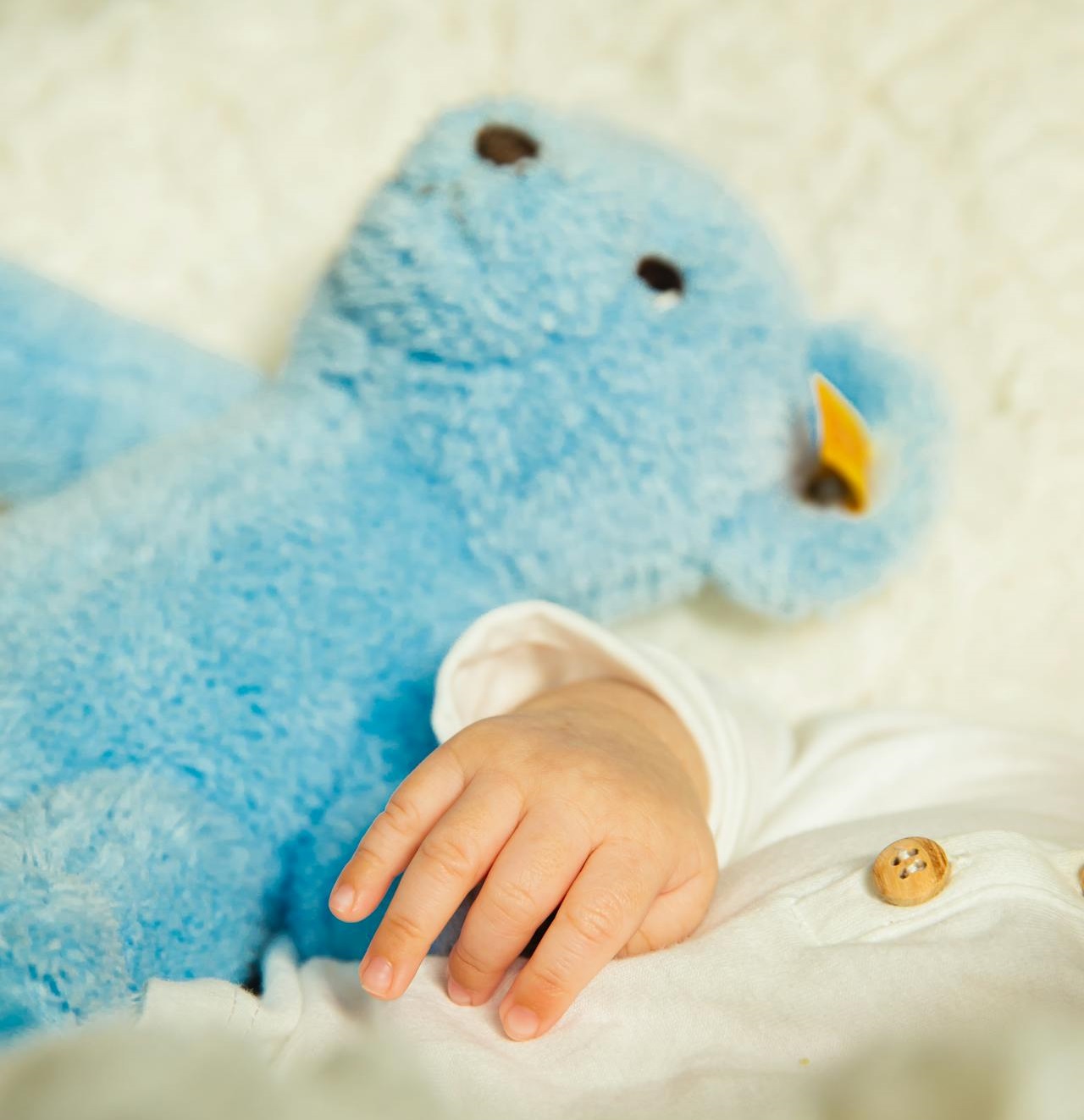How to Properly Dress Baby for Sleep by Temperature
Congratulations on your newborn! Having another little mouth to feed and body to cloth can sound daunting. I know I had SO many questions with my little one, but the most important was how to keep baby comfortable. We want to make sure our babies don’t overheat if we overdress them but also ensure they don’t get too cold!
Since newborns can struggle a little when it comes to body temperature regulation, it’s important to be aware of how to properly dress baby for sleep based on room temperature. Many factors can go into this. Are they wearing thick clothing? What TOG rating is their sleep sack? Is the thermostat set to 68 degrees F?
These are just a few of the many factors to be considered. In this post, we will review all tips and tricks to ensure baby is dressed properly for sleep based on room temperature.
What is a TOG rating?
TOG rating is a term you will see used several times throughout this post. It refers to “Thermal Overall Grade”. This measures the thermal insulation of a product (sleep sacks in particular). The higher the grade, the warmer the fabric!
It’s a good rule of thumb to go with a higher TOG rating during the colder months and a lower TOG during the warmer months. The most common TOG ratings you will see when it comes to a wearable blanket, better known as a sleep sack, are 0.5, 1.0, and 2.5:
0.5 TOG – this lower TOG rating is great for very warm temperature conditions between 71°-77°F (23°-26°C)
1.0 TOG – ideal for 69°-73°F (21°-23°C)
2.5 TOG – best for cooler temperatures between 61°-68°F (16°-20°C)
Lately, I’ve been loving WildBird products for sleep sacks. The fabric is amazing, and they are one of those brands that offers soft, cloudlike products with muted tones and mellow prints. I absolutely love that for my little one! Not to mention, they use sustainable materials that are environmentally friendly. Check them out here.
How do I know if my baby is too cold?
Let’s start with the obvious. A baby that is too cold will likely feel cold to the touch, just like we do! The skin may be a little pale, they will be extra fussy, and they will likely not sleep well. A cold baby will wake up frequently throughout the night due to being uncomfortable.
The first step you may want to take is swapping out the sleep sack baby is currently in for one with a higher TOG rating. If that is not an option, try dressing baby in a warmer fabric such as polyester, fleece, flannel or wool. These fabrics are known to retain heat better than other common fabrics. A second layer of clothing can always work, too! Allow baby 10-15 minutes to readjust their body temperature once changes have been made.
Disclaimer! If you have a premature baby, be EXTRA careful! They are smaller and have less fat on their bodies. Always consult your pediatrician for advice on how to keep you baby comfortable and for safe sleeping practices!
How do I know if my baby is too warm?
Some signs baby may be overdressed or in a room that is too warm are flushed cheeks, heavy breathing, sweating, and being less responsive than normal. Feeling the back of their neck can help give you an idea of their body temperature as well. Allowing baby to become overheated can be VERY dangerous so ensure you know the signs!
It’s a good idea to be aware that if you’re unsure of how warm baby may be based on factors such as clothing thickness, room temperature and blanket insulation, aim towards the “cooler” side. A study published in 2022 showed that overheated babies are at increased risk for SIDS.
When it comes to warm summer months and keeping baby cool, it’s a great idea to look for low TOG ratings when it comes to sleep bags or sleep sacks. As for clothing, great fabric options are bamboo, jersey knit, organic cotton and muslin. Each of these fabrics are moisture wicking and breathable. Excellent for keeping baby cool!
What is the best temperature for baby to sleep in?
Since it’s best to keep baby a little bit warmer, 68°-72°F (20°-22°C) would be perfect given baby is dressed in appropriate clothing according to research. Anything cooler than that temperature range would require warmer clothing whereas anything warmer would require lighter, more breathable clothing.
Keep in mind that this temperature range is an estimate based on climate and clothing. A household in an area with high humidity may feel MUCH warmer in the 68°-72°F range than in a household with low humidity. Make sure you consider this when dressing your little one as there are many factors that can influence temperature!
How to Dress Baby for Sleep in a 65 Degree Fahrenheit Room
65°F is a good room temperature that runs on the cooler side. One layer of clothing (such as a warm onesie or 2 piece pajamas with socks) and a sleep sack with a 2.5 TOG rating will do. Since babies can respond differently to heat, use your best judgement when it comes to what fabric you are dressing them in. A 2.5 TOG sleep sack will offer great warmth to avoid having to add an extra layer of clothing.
How to Dress Baby for Sleep in a 68 Degree Fahrenheit Room
68°F is the ideal room temperature! One layer of pajamas with breathable fabric such as bamboo paired with socks and a 1.0 TOG sleep sack will be best for this temperature. As mentioned earlier, keep humidity range in mind.
A 68°F room in humid Florida with no air conditioning will feel much hotter than a 68°F room in a dry, desert region. Trust your judgement, and keep the tips provided above regarding signs of overheating in mind.
How to Dress Baby for Sleep in a 70 Degree Fahrenheit Room
A room over 70°F can feel quite warm, especially if you are in a more humid climate. A 0.5 TOG sleep bag with light clothing would work perfectly. Socks? Not necessary unless your little one tends to get cold feet.
As stated earlier, a room temperature between 68°F-72°F (20°-22°C) is the gold standard (this can change with other factors, of course). Anything warmer than that should be monitored if your baby is bundled in a sleep sack. Keep track of baby’s temperature as overheating can be a risk factor when in hot weather.
Baby Sleep Safety Tips
Let’s review the facts. A major push has been made to promote safe sleep with newborns and babies since the 1990’s. I could sit here and throw the graphs and data at you that I’ve analyzed, but that’s no fun! The main takeaways from the data we have is that if the guidelines below are followed, there tends to be a significantly lower risk of SIDS (Sudden Infant Death Syndrome). Read the in-depth article from the American Academy of Pediatrics here to learn more!
Avoid loose bedding – as you’ve seen throughout this article, I mention the use of sleep sacks (often referred to as sleep bags). These are designed to be wearable and move with your baby or toddler throughout the night. There is little risk of a child getting caught up in this compared to a regular blanket. Regular blankets can contribute to SIDS by potentially causing suffocation or strangulation.
Position baby on their back for sleep – research shows that positioning baby on their back for safety reasons reduces the rate of SIDS.
Choose firm and flat surfaces – a firm crib mattress is always the best choice. Avoid placing babies in hammocks or carrying devices for sleep or naps. We want babies airway or mouth to be free of any type of obstruction.
Keep objects out of babies crib – common objects many may want to put in babies crib include stuffed animals, soft objects, pillows, or additional blankets. All pose a suffocation risk. Steer clear!
Avoid hats – asides from the obvious risk of the hat falling off causing a potential suffocation hazard, babies don’t typically need hats when going to sleep in their nursery.
Stop swaddling once baby can roll over – swaddling prevents baby from using their arms. This means that if they accidentally roll over onto their face, there is a chance they may be unable to move their head to breath if face down. Avoid swaddling, or at a minimum, allow babies arms to remain free of the swaddle once they can roll over.
Allow baby to sleep in their own space – to avoid the risk of accidentally rolling over or potential suffocation, allow baby to sleep alone. A bassinet next to your bed for the first 6 months of life is recommended by the AAP.
I once again want to bring attention to the American Academy of Pediatrics website. They have excellent recommendations that I referenced for the information provided above. For more detailed guidelines and video resources about safe sleep, check them out here!
Overall, temperature regulation is only one important factor when it comes to a comfortable sleep environment. Humidity, sleep wear, sleep sacks, and environment all have a role to play and must always be considered. Being a new parent can bring on so many new anxieties and by being aware of safe sleeping practices, we can have one less worry in our day-to-day responsibilities! Happy sleeping!
Disclaimer: This post is for informational commentary only and is not intended for use as medical advice. Please seek guidance from your pediatrician for any concerns! This post may contain affiliate links. I have thoroughly researched these companies, tried their products, and hope you love them as much as I do!
